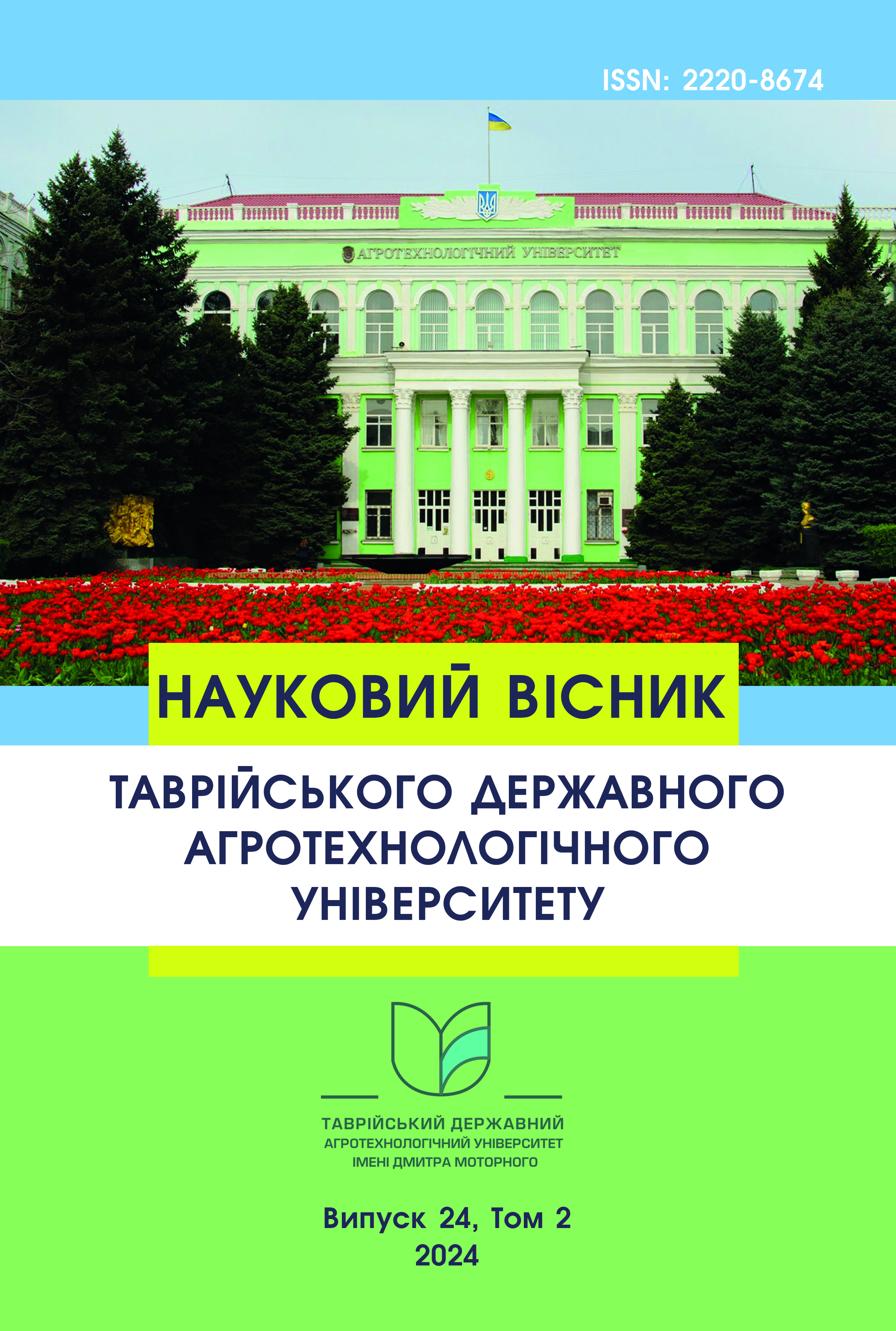INFORMATION SECURITY MECHANISMS AND THEIR CHALLENGES
Abstract
The purpose of the article is to consider information security mechanisms and their challenges, as well as to consider security programs and information protection requirements. Information security mechanisms are various measures that are intended to protect data from unauthorized access, modification, disclosure, or destruction. They play a key role in preventing data leakage or damage that may result in financial losses or privacy breaches. Encryption, authentication, and access control are the main security tools that help protect information. Organizations must develop and maintain these mechanisms and continually improve their systems to meet new challenges, such as rapid technological advances and increasing cyber threats. Regulatory standards and information security requirements are sets of rules and procedures that establish minimum information security requirements for organizations under their jurisdiction. Regulatory standards and requirements for information protection are developed to protect the confidentiality, integrity and availability of information. There are many different regulatory standards and information protection requirements. Some of the more common types include laws and regulations that establish mandatory information protection requirements for organizations under their jurisdiction. For example, the General Data Protection Regulation (GDPR) establishes requirements for the protection of personal data for organizations that process personal data of citizens. Also, they are not mandatory guidelines and recommendations, but they are often used by organizations to develop their own security policies and procedures. Internal security policies and procedures are sets of rules and procedures that organizations develop to protect their information. Internal security policies and procedures must meet the requirements of any relevant regulatory standards and requirements. Regulatory standards and requirements for information protection are an important tool for information protection. They help organizations prevent information leakage or corruption that could lead to financial losses, privacy breaches, or other negative consequences. Organizations subject to regulatory standards and information protection requirements must develop and implement effective security programs that meet those standards and requirements.
References
2. Михайлов А. О. Дослідження моделей та методів контролю доступу до інформаційної системи: пояснювальна записка до атестаційної роботи здобувача вищої освіти на другому (магістерському) рівні, спеціальність 121 – Інженерія програмного забезпечення. А. О. Михайлов; М-во освіти і науки України, Нац. ун-т радіоелектроніки. Харків, 2021. 83 с.
3. Шевчук Д. Т. Методи аутентифікації та авторизації у мобільних та веб-додатках. Інформаційне суспільство: технологічні, економічні та технічні аспекти становлення: Міжнародна наукова інтернет-конференція. 2022. 56 с.
4. Скрипка М. В. Система контролю доступу до персональних даних. 2021.
5. Тівецька А. В., Невмержицька С. М. Удосконалення системи управління персоналом організації з врахуванням вимог міжнародних стандартів ISO. Вісник Київського національного університету технологій та дизайну. Серія «Економіка і вища освіта». 2015.
6. Говорущенко Т. О., Мевша А. В., Криськов В. А. Класифікація відмов та вразливостей системного програмного забезпечення. 2014.
7. Олешко І. В. Моделі та методи оцінки захищеності механізмів багатофакторної автентифікації від несанкціонованого доступу. 2014.
8. Shevchenko Svitlana, Skladannyi Pavlo, Martseniuk Maksym. Аналіз та дослідження характеристик антивірусного програмного забезпечення, стандартизованого в Україні. Кібербезпека: освіта, наука, техніка. 2019. № 4.4. С. 62–71.
9. Близнюк І., Шорошев В. Основи нормативно-правового забезпечення захисту інформації в комп’ютерних системах державних органів України. 2002.
10. Легка О. В. Імплементація міжнародних стандартів щодо захисту права на доступ до інформації в Україні. 2023.
11. Чунарьова А. Система управління інформаційною безпекою на базі міжнародних стандартів серії ISO. 2012.
12. Шемет А. Застосування методів програмного резервування інформації: аспект резервного копіювання. метод паралельного резервного копіювання. Вісник Хмельницького національного університету. 2011. Вип. 3. С. 221–225.
13. Федоренко Р. М. Контент-моніторинг інформаційного простору як чинник забезпечення інформаційної безпеки держави у воєнній сфері. Сучасний захист інформації. 2015. Вип. 2. С. 21–25.
14. Оксіюк О. Г., Шестак Я. В. Методологія розробки комплексних систем захисту інформації в сучасних інформаційно-телекомунікаційних системах. Збірник наукових праць Військового інституту Київського національного університету імені Тараса Шевченка. 2015. Вип. 50. С. 236–243.
15. Зінченко Д. А., Макарова О. П. Аналіз ризиків і стратегій захисту від кібератак у сучасному цифровому світі. 2021.
16. Думанська Н. О. Шифрування даних в інформаційних системах. Математичні методи, моделі та інформаційні технології в управлінні підприємством: тези доповідей V студентської вузівської наукової конференції (9 листопада 2020 р., м. Вінниця). Вінниця, 2020. С. 23–25.
17. Lubko D., Sharov S., Strokan O. Software development for the security of TCP-connections. Modern development paths of agricultural production: trends and innovations. 2019. Ch. I. P. 99–109.
18. Michaelsen J. R., Vacca J. W. Information security risk management: A guide to managing risks to information assets. Springer, 2018.
19. Grossman J. et al. XSS Attacks: Cross site scripting exploits and defense. MA: Syngress, 2007. 463 с.
20. NIST. National institute of standards and technology. Cybersecurity framework. URL: https://www.nist.gov/cyberframe-work (дата звернення 15.09.2024).
21. ISO/IEC 27005:2011. Information security risk management.
22. Michael Whitman, Herbert Mattord. Information security: principles and practices. Publisher: Cengage learning. 2017. 656 p.
23. Smieliauskas W., Bewley K. Auditing: An International Approach. McGraw-Hill Ryerson Higher Education, 2006. 800 p.
24. Cardwell Kevin. Building Virtual Pentesting Labs for Advanced Penetration Testing. Birmingham: Packt Publishing Ltd, 2014. 412 p.
25. Porter B., Hatherly D., Simon J., Principles of External Auditing. 3rd edition. Wiley, 2008. 816 p.
26. Jason A. The Basics of Information Security: Understanding the Fundamentals of InfoSec in Theory and Practice. Waltham: Syngress, 2014. 240 p.
27. Jason A. Use of Elliptic Curves in Cryptography. Advances in Cryptology. Crypto’22. LNCS 218. 2022. P. 503–518.
28. Shanon C. E. Communication Theory of Secrecy System. Bell System Technical Journal. 2011. Vol. 103, n.87. P. 345–401.
29. Лубко Д. В., Мірошниченко М. Ю. Аналіз сучасних підходів та методик в області захисту інформації та даних. Вісник Херсонського національного технічного університету. 2024. №1(88). С. 231–236.



